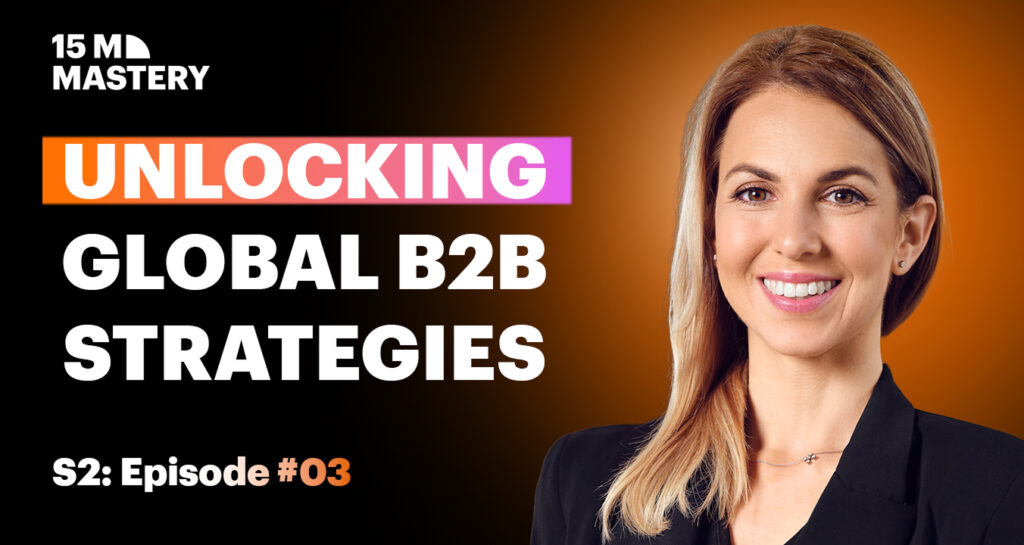Maximising B2B Marketing for Casino Game Providers: Positioning, Messaging, and Sales Collaboration
She is known for her strategic planning, ability to craft highly effective, tailored solutions, and a strong track record in brand development, enabling brands to achieve significant visibility. Her expertise also extends to digital marketing. In this discussion, she shares her approach to positioning, messaging, and collaborating with sales to drive real impact.
Prioritising the Right Products in B2B Marketing
Marketing teams in this space face the challenge of handling a high volume of products. Unlike other industries, where a single product might dominate a campaign, casino game providers must carefully select which games to highlight.
“You can’t spread yourself too thin by pushing everything with the same intensity. The key is to pinpoint the products that deserve special attention,” explains Hammon.
Drawing a parallel to fast-moving consumer goods, she emphasises the importance of balancing product variety with a clear focus. Trying to promote every game equally can dilute messaging and reduce effectiveness.
Where Does ROI Come From?
Measuring return on investment (ROI) in B2B marketing isn’t always straightforward. Some activities, like sponsorships and partnerships, don’t have immediate financial payoffs but contribute to long-term brand visibility and relationship-building.
“A lot of decisions come down to gut instinct, allocating spend for visibility and brand development where the ROI isn’t always black and white,” Hammon notes.
While some activities, such as promotional campaigns and partnerships, have clearer ROI tracking, others, like merchandise and streamer collaborations, are harder to quantify directly. The key is to strike a balance between measurable and brand-building efforts.
Differentiating the Brand and Individual Games
With the growing number of suppliers and games on the market, differentiation has become more crucial than ever. Hammon highlights the shift in strategy over the past five years, where many companies have realised that less is more.
“If you want to stand out, it’s about highlighting what’s genuinely great. One of the biggest ways to differentiate is through people,” she explains.
Having the right people behind a brand is just as important as the product itself. Strong personalities can create buzz and credibility, making capturing attention in a crowded space easier.
The Shift Towards Influencer and Ambassador-Led Marketing
Game providers have started to lean heavily into influencer-driven strategies. Partnerships with well-known gaming personalities and brands help drive visibility and engagement.
Relax Gaming has been at the forefront of this trend, collaborating with Casino Grounds, Casino Daddy, and About Slots to develop games tailored to their audiences. Hammon sees this as a valuable approach that strengthens connections between game providers and players.
“These influencers have a direct link to players, making their insights incredibly valuable. Pairing their knowledge with the game provider’s expertise results in a powerful collaboration,” she says.
Beyond game collaborations, Hammon points out the rise of B2B influencers, respected industry figures who endorse brands, conferences, and thought leadership initiatives. She expects this trend to continue growing.
Bridging the Gap Between B2B and End-User Marketing
Historically, suppliers have had limited direct contact with players, making it difficult to gather meaningful feedback. While transactional data has been valuable, companies are now complementing this with insights from streamers and content creators.
“There isn’t really any mass A/B testing, so having direct feedback from streamers and players is invaluable,” Hammon says.
These insights help suppliers refine their offerings and ensure that their games resonate with the target audience.
Making a Brand’s Fingerprint Recognisable
Standing out can be difficult with most casino games hosted on third-party operator platforms. Players typically engage with operators rather than game providers directly. So how can suppliers ensure their brand remains distinctive?
“Top-notch design and great mechanics are essential. A strong identity is what helps players recognise a Relax game,” Hammon explains.
Consistent branding across games, from visual style to game mechanics, can create familiarity and build player loyalty over time.
The Importance of Sales and Marketing Alignment
One of the most overlooked aspects of B2B marketing is its collaboration with sales. Hammon stresses that marketing functions as a service department, providing sales teams with the tools they need to succeed.
“The relationship is always there, but it depends on how much people choose to invest in it. Operating in silos simply doesn’t work,” she asserts.
Aligning marketing and sales ensures a cohesive approach, where every campaign is designed to support commercial objectives. Budget limitations will always be a factor, but optimising resources effectively can maximise results.
Strengthening Marketing Strategies for Long-Term Success
For game providers, success in B2B marketing comes down to making strategic choices about product promotion, branding, and collaboration. Selecting the right games to focus on prevents marketing efforts from becoming too scattered, while strong branding ensures that players recognise a provider’s distinct fingerprint. Partnerships with influencers and ambassadors can create an emotional connection with audiences, further solidifying a brand’s presence in the market.
At the same time, aligning marketing with sales is vital for maximising business impact. When these departments work together, they can create a more seamless and effective strategy that benefits both the company and its partners. By refining their approach and embracing new opportunities, game providers can build a marketing strategy that not only stands out but delivers tangible results.


.svg)


